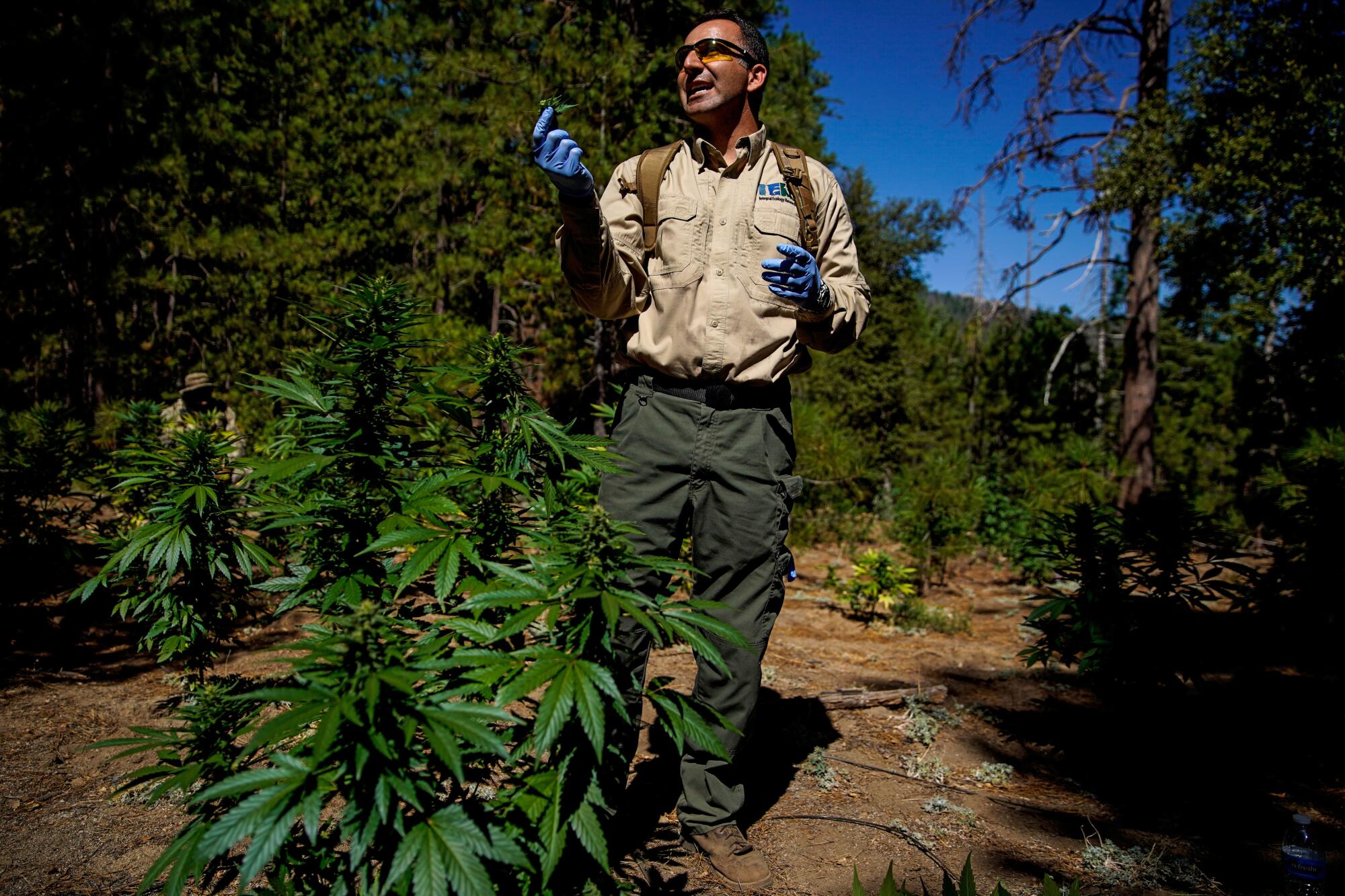
- Share via
When California voters legalized cannabis in 2016, supporters of Proposition 64 hoped it would significantly reduce the scourge of black market weed cultivation, particularly on public lands.
Yet nearly two years later, illegal marijuana grows are still rampant across wide swaths of the national forests in California, leaving behind a trail of garbage, human waste, dead animals and caustic chemicals. Nearly all of these farms are the work of Mexican drug trafficking organizations, posing dangers not just for the environment, but to hikers and others who might encounter them.
In 2018, law enforcement in California removed 1,396,824 marijuana plants and eradicated 889 outdoor cultivation sites, most of which were operated by Mexican drug traffickers on federal lands, according to the Central Valley California High Intensity Drug Trafficking Area program.
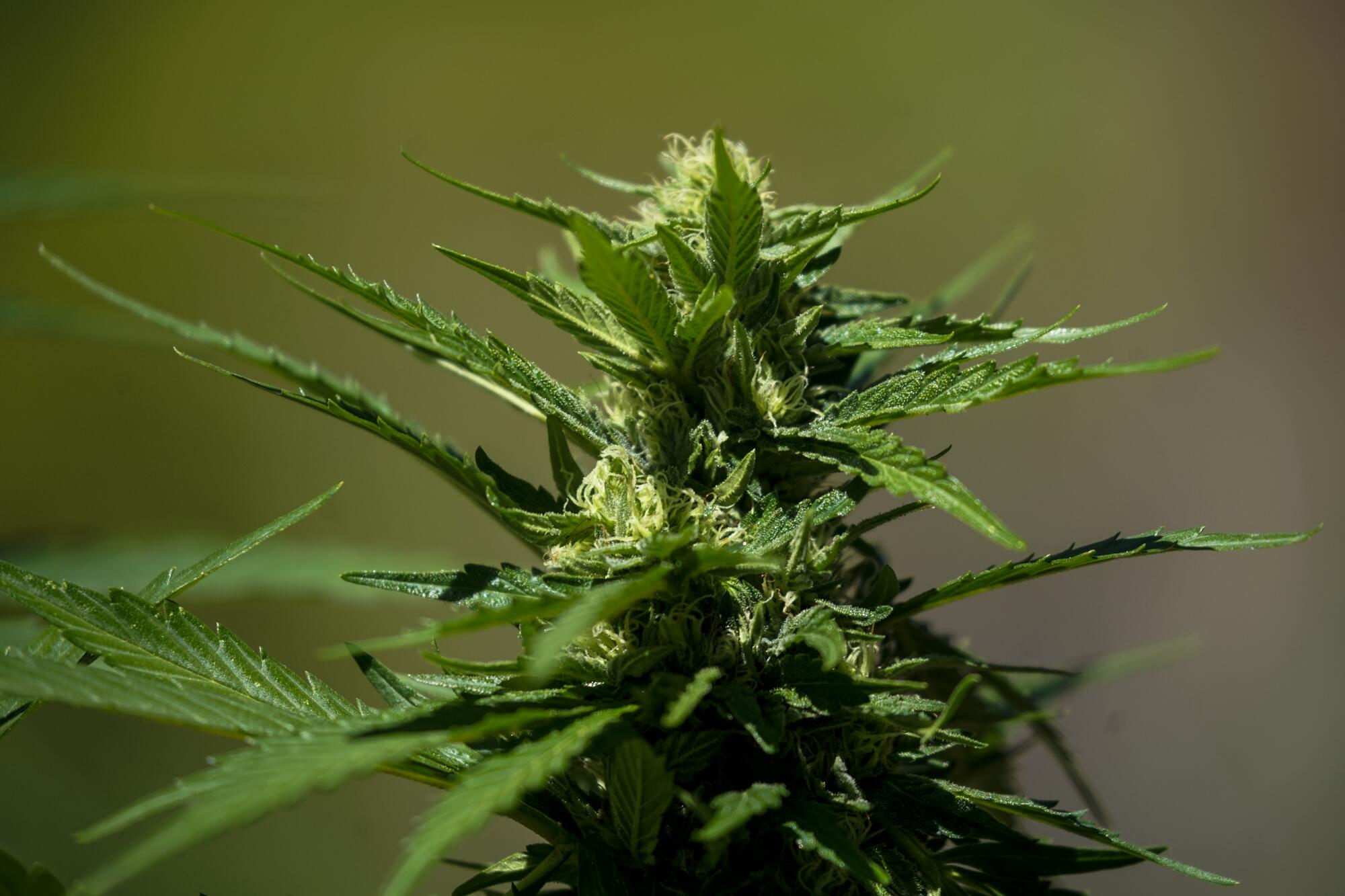
“It’s a huge problem,” said William Ruzzamenti, executive director of the Central Valley HIDTA program, which includes federal, state and local agencies. “They’re growing tens of millions of plants every year on public lands in California, and they leave a huge mess when they finish.”
One of these messes was visited last week by dozens of national and state officials, who arrived in the Sierra National Forest in a Black Hawk helicopter. There, in a stretch of forest in Madera County, they toured an illegal cultivation site — believed to be run by Mexican drug trafficking organizations that authorities had raided the day before.
The site was just as the growers had left it: Sleeping bags and ragged clothing. Garbage littering the ground. Miles of plastic pipes diverting water. A stockpile of fertilizers, soil and hazardous chemicals.
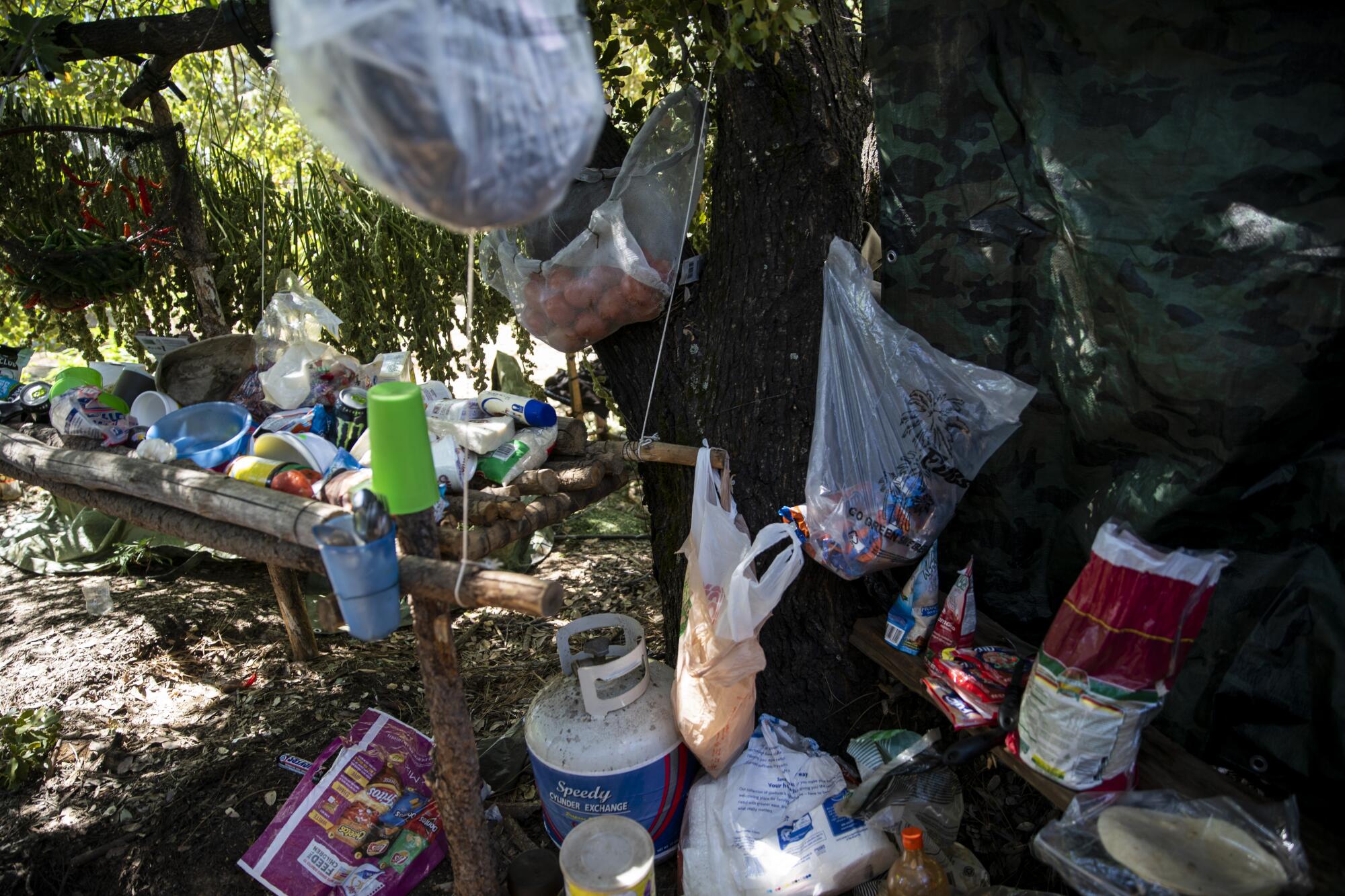
Nearby were roughly 6,000 springy, vibrantly green marijuana plants winding through the arid forest, oddly out of place, and doused with toxic chemicals.
Mexican cartels have been operating illegal grows on California’s public lands for decades, their numbers slowly increasing. Advocates for legal marijuana thought a legal market would stem the illicit production, but the number of illegal grows has stayed steady in California. In other states, their numbers are on the rise.
Traffickers have become more adept at evading law enforcement, and are expanding into new territories nationwide, said Mike McKinney, assistant special agent in charge for the U.S. Forest Service Intermountain region.
“They’re getting deeper, darker and harder to find,” said McKinney. “They’re going into areas that haven’t seen human foot traffic in forever.”
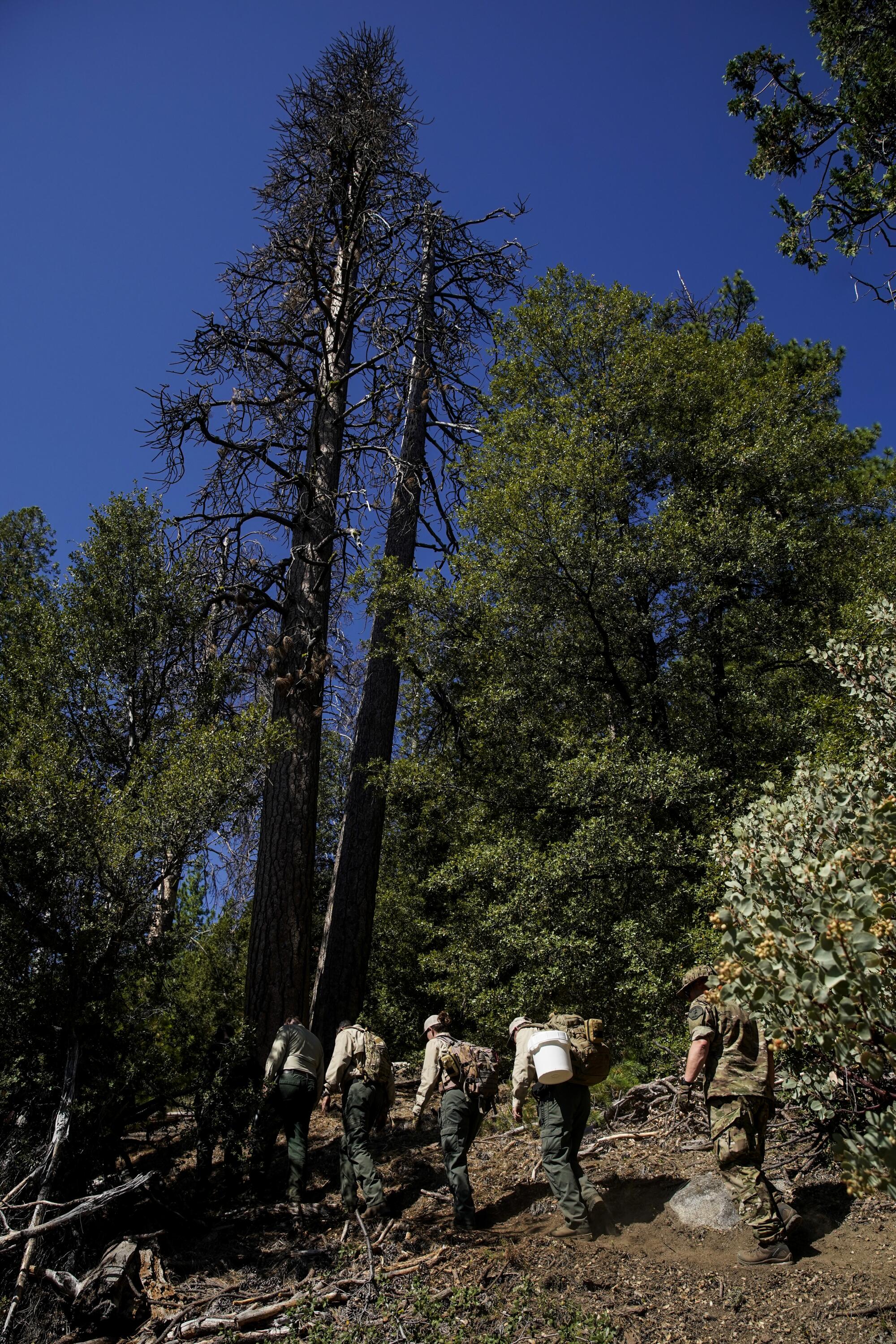
Grow sites run by Mexican traffickers have been found in states across the country, including Oregon, Washington, Nevada, New Mexico, Utah, Colorado and Texas. In 2018, law enforcement raided 3,847 outdoor grows nationwide, predominantly operated by organized drug traffickers on federal lands, according to HIDTA figures.
Those raided sites are estimated to be just a quarter of the illegal public land grows in existence.
Mourad Gabriel, co-director of the Integral Ecology Research Center, a conservation nonprofit that has led the efforts to clean up the sites and assess their impact, estimates there are more than 1,700 known sites in California alone.
“Illegal poaching, illegal cutting of trees, the application of illegal pesticides, the diverting of millions of gallons of water for just one site,” said Gabriel. “Extrapolating that to thousands of sites in California is a significant environmental threat.”

Carbofuran is a signature of illegal Mexican grows, a pesticide so hazardous that a teaspoon can kill a fully grown bear, according to Gabriel. Effectively banned in the United States, carbofuran is smuggled across the U.S.-Mexico border and used by growers to protect the cannabis plants from wildlife. Growers mix carbofuran into the water feeding the plants, and also spray it directly on the ground and foliage that border them.
Research conducted by the Integral Ecology Research Center has found traces of carbofuran in streams and rivers, and also in animals — living and dead — including at-risk species such as the Pacific fisher.
The damage doesn’t stop there. Growers leave behind tons of garbage, such as car batteries, propane tanks and food along with other caustic pesticides, herbicides and rodent killers.
Grow sites on public lands also compromise California’s water supply, poisoning watersheds and diverting flows from springs and streams.
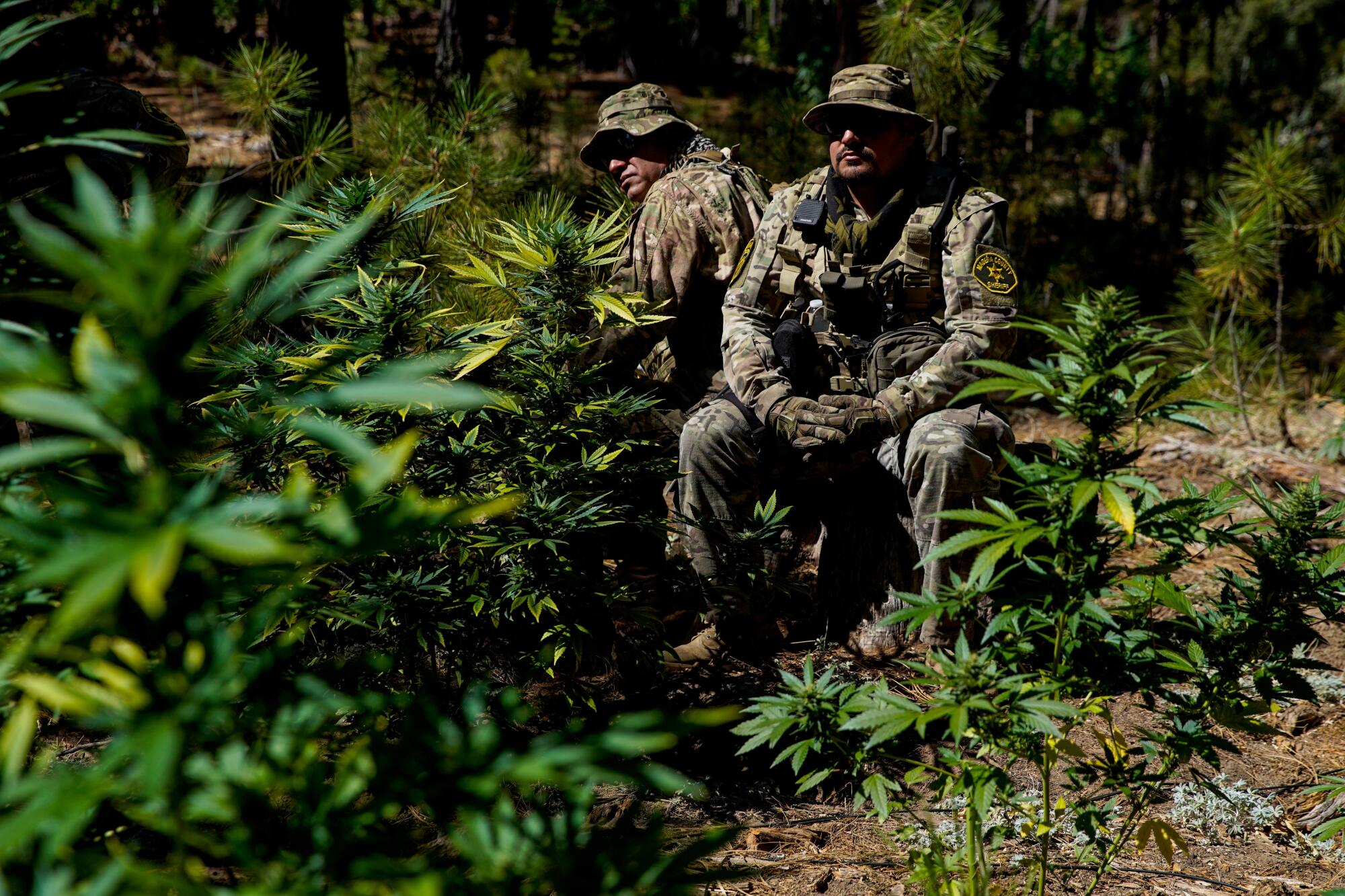
Experts estimate that each plant uses nine to 12 gallons of water per day. A grow site with 6,000 plants, such as the recently raided site in the Sierra National Forest, poaches a minimum of 5.4 million gallons of water a year.
Multiply this by the thousands and illegal grow sites in California are sucking up millions, potentially billions, of gallons of water a year.
“Seeing this just makes me sick,” said Dean Gould, forest supervisor for the Sierra National Forest, while visiting the illegal grow site last week. “We have the most selfish possible example of the most destructive use of land to benefit a very select few.”
Even after the sites are busted and the plants removed, they are expensive to clean up, requiring crews to hike, often for miles to reach them. The locations are typically so rugged and remote that garbage must be bundled up and flown out via helicopter.
Since October of 2018, Forest Service agencies in California spent $1.5 million just on equipment and disposal for cleanups last year, a number that doesn’t include the cost of personnel.
Nationally, the Forest Service spends roughly $12 million annually on enforcement alone, a number that doesn’t include the cost of cleanups, which typically have a price tag of $15,000 or more per site.
Dealing with grow sites also absorbs funds from other agencies, such as the California Department of Fish and Wildlife and local law enforcement.
“It’s like a sinking ship. As fast as we’re plugging the holes, we’ve got people siphoning all that water off,” said Gould. “This is having a direct impact on the bottom line.”
While supporters hoped Proposition 64 would reduce the profitability of illicit weed farms, legal marijuana in California — taxed and regulated — remains more expensive than the black market stuff, giving the latter a competitive edge. Outside the state is an even bigger market for black market cannabis.
“What nobody factored in when they were selling this big myth ... is that 75-80% of the marijuana cultivated is shipped out of California because the profit margin is bigger,” said Ruzzamenti.

In February, Gov. Gavin Newsom vented about the continuing illegal cannabis farms, saying he would deploy the National Guard to assist with efforts. “They are getting worse, not better,” Newsom said at the time.
A year earlier, U.S. Rep. Doug LaMalfa (R-Richvale) introduced H.R. 7018, the Protecting Lands Against Narcotics Trafficking Act, which would demand stricter fines and penalties for environmental crimes caused by illegal grow sites and would also allocate additional resources for enforcement and eradication. So far, the legislation hasn’t moved forward.
In the meantime, illegal grow sites continue to flourish.
“They’re business people,” said Gould of the drug trafficking organizations. “They are going to go where they can to make the most money with the least pain. They are going to continue to test and test and test to see if the forest is one of those places.”






